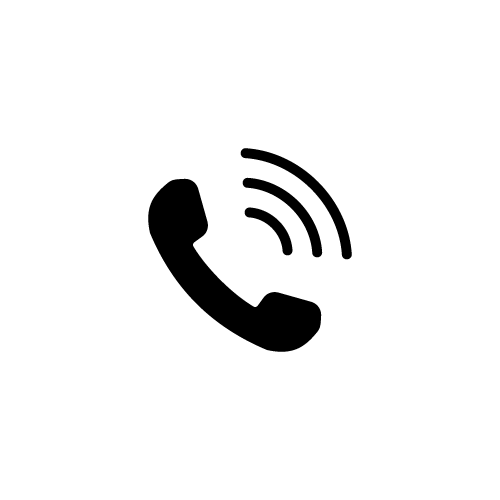We are now going to look at the role communication plays in the animal care workplace. It is important to be aware, that in these settings, extra care needs to be considered as there can sometimes be quite emotional and stressful situations for the patient and the family. You will need to be mindful of how you address those seeking care for their animals and offer a level of support that keeps all involved as calm and supported as possible.
Reflection
If you are a pet owner it’s likely that you have already communicated with animal care workers when attending to your pet’s health needs. What kinds of things did you need to talk about with the animal care staff? What communication skills do you think the animal care workers you communicated with used when they were talking to you? Did they make a good impression on you or do you wish they had done things differently?
Types of Workplace Communication
Let’s take a look at the kinds of conversations that happen in busy workplaces like the SPCA. Thomas works for the same SPCA as Emily as an animal care attendant and is one of the senior staff that she has been buddied with while she learns the ropes of the role. He is currently training to become a veterinary nurse and therefore has been participating in client consultations and assisting with treatment procedures with the onsite vets as part of his course practicum. They are chatting about vet nursing while they are on their coffee break.
Case Study
Emily chats to Thomas about vet nursing.

Emily: Who do you have to communicate with each day?
Thomas: Mainly my colleagues, the two full-time vets and our clients. There are also two other veterinarians who work on a part-time rostered basis, two nurses, me, and our receptionist. We have about twenty patient appointments each day. However, there are also some walk-ins and people who visit to make appointments or buy some of our retail products as well as deliveries. We also speak with clients and other stakeholders on the phone fairly regularly.
Emily: It sounds busy! How do you all know what needs to be done?
Thomas: We have a regular weekly team meeting every Monday morning. Everyone attends if possible, and we take minutes (notes) of the meeting discussion for the benefit of anyone who couldn't be there. At these meetings, we discuss all the animals that are currently in-house and provide updates on their progress. I am required to provide a report on my allocated animals. The bosses also provide everyone with a summary of how the business is going, marketing initiatives, events and any relevant information that we need to know, such as new equipment or techniques. The meetings are a good opportunity for me to ask questions about any animal or process that I need clarification on.
Other methods that we use to share information include internal emails and written records or notes on noticeboards. The written notes are particularly useful in the animal housing areas as this is how we communicate feeding, exercise, treatment, and progress information to other staff rostered on different shifts.
Emily: How do you usually communicate with people who work outside of the SPCA?
Thomas: Mainly face-to-face discussions, telephone, and email. Clients visit the clinic and telephone regularly to make appointments, bring their pets in for treatment or enquire about some of our specialised services and procedures. We also provide email communication on treatment reminders and appointment confirmations. Recently, we started using social media to advertise our clinic, and I have been involved with this project as it is an interest of mine. We now run regular ads on Facebook and Instagram. We also have a website that links to the social media pages for potential clients to research. Commonly, the website is used to outline the clinic’s services, bookings, and testimonies from clients, as well as post the monthly newsletter. The monthly newsletter is also emailed and posted to regular clients.
Our bosses have high expectations of how we communicate. We need to always be polite and professional, listen attentively, follow their requests and procedures, and use appropriate industry terminology to explain procedures and products to clients.
Sometimes, clients have very specific requests that require a bit of extra research in order to provide them with a solution or answer. In these situations, I sometimes need to let the client know of the possible delay while I obtain the necessary information and then follow up with their query afterwards.
Emily: Wow! I had no idea that you had to talk to so many different people every day.
Hei Mahi – Activity
Here’s a list of the communication skills demonstrated in the conversation between Thomas and Emily, which you can use for a pre-learning self-evaluation: how good do you think you are at the moment with the following skills? Rate yourself. We’ll look at each of these in this module, so you will be able to identify any areas that you would like to gain more skills in.
- Interpersonal communication: Engaging in face-to-face discussions with colleagues, clients, and external stakeholders.
- Team communication: Participating in team meetings, providing updates, and asking relevant questions.
- Written communication: Using internal emails, written notes, and noticeboards to share information.
- Telephone communication: Regularly communicating with clients and stakeholders over the phone for appointments, inquiries, and updates.
- Professional etiquette: Maintaining politeness, professionalism, and attentiveness when communicating with others.
- Listening skills: Listening attentively to colleagues and clients to understand their needs and respond effectively.
- Reporting and documentation: Writing and sharing reports on animal care and business updates during meetings.
- Clarifying and confirming information: Asking questions and seeking clarification when needed, particularly in meetings.
- External communication: Communicating professionally with clients through email, phone, and in-person discussions.
- Client service skills: Handling client inquiries, addressing specific requests, and following up with necessary information.
- Use of industry terminology: Explaining procedures and products using appropriate technical terms to ensure client understanding.
- Managing client expectations: Informing clients about delays and following up to ensure their queries are addressed.
- Social media communication: Engaging with clients via social media platforms and contributing to advertising projects.

What’s a stakeholder?
Let’s talk about stakeholders first. Stakeholders are people who are either affiliated or involved with an organisation. Stakeholders can include:
- Employees
- Supervisors/managers (internal staff)
- Clients (external)
Throughout your work, you will communicate with a wide range of stakeholders within your organisation and outside. By identifying the type of stakeholder, you will then be able to cater your communication to suit. For example, if a client has their pet booked in for grooming for the coming day, your workplace may have a certain procedure, such as sending a reminder SMS the day before, confirming the appointment. A phone call and email may also be issued if there are specific details the client needs to know prior to the appointment.
Identifying stakeholders
The way stakeholders are identified for their relevance is usually carried out through your orientation (when you meet your employees and or make your first contact with clients). You may also become acquainted through any other on-the-job training or through communication with staff, supervisors and/or managers.
Activity – Hei Mahi
Who are Emily’s stakeholders? Who are Caleb’s stakeholders? Who are Aroha’s Stakeholders? Who are Zoe’s potential future stakeholders? Do you have stakeholders (if you are already in the industry)? If yes, who is your list most similar to out of Emily, Caleb, Aroha or Zoe? If you have completely different stakeholders, make a note.
Write your ideas down for your own future reference and save them to your study notes on your own device. Take a moment to check your learning progress by completing the following activity.
Before we dive into the types of communication, it is important to understand that there is more to communication than back and forth conversation with words. Within the workplace, you will be required to communicate internally with colleagues, supervisors, and management. Externally, you will be required to liaise with customers, suppliers and possibly government departments. It is important to remember that effective communication skills can be learnt and practised, just like learning a musical instrument.
When working in the animal industry, it is likely that you will be expected to communicate with people on a regular basis. You may be the first point of contact for clients; therefore, your communication skills and first impressions are very important.
Types of communication identified
There are various types of communication with presentation styles, platforms and formats that can be used for communication.
The following table illustrates the various types of communication and how they can be applied in the workplace. Take the time to familiarise yourself with each type before we look at them in further detail.
Activity
| TYPE OF COMMUNICATION | HOW IT IS APPLIED IN THE WORKPLACE |
|---|---|
|
Face-to-face
|
Used for:
|
|
Telephone
|
Used for:
|
|
|
Used for:
|
|
Social media
|
Used for:
|
|
Written
|
Used for:
|
There is a lot to consider with face-to-face interaction because you are both seen and heard. The way you present yourself physically with your body and verbally with your language and tone will be both very important factors.
There are times when you will have high-stress situations where you will have to think on your feet and act fast, so it is important to remain calm at all times. In the animal care industry, it is not uncommon to have difficult scenarios present at the most unexpected times. You must always be prepared where you can. For example, you may have experiences with clients who have companion animals that are very sick or close to the end of their lives. You may also be working with very upset people who have to surrender their animals to your organisation because they can no longer care for them. You may work with animals that have been badly neglected, which will make you feel very angry.
However, there will also be many positive and happy interactions that you will have with clients and their companion animals. In these kinds of situations, it will be much easier for you to communicate with them, so just be yourself. Your shared love of animals will help you with your communication.
Speaking Skills
The following are some tips that you should consider when engaging in face-to-face communication with colleagues, clients/ patients.

Eye contact
Not looking someone in the eye can be interpreted as being evasive and insecure. Be sure to make eye contact, but try not to stare. Remember to blink and move your head every so often to break the contact momentarily.
Caution
While this is generally good advice in the global business world, be mindful that the level of appropriate eye contact can be a cultural value. Be prepared to respond according to the needs of the person you are talking to so that misunderstandings are avoided.
For example, Māori, Polynesian, Asian, Middle-Eastern and Hispanic peoples can regard direct eye contact as disrespectful. If they do not make eye contact, take it as a signal that you can do the same.
Use correct industry terminology
The use of slang words, nicknames or acronyms can be confusing to people outside the workplace or industry and can make you appear unprofessional. Always ensure the listener has understood any important directions or advice. Here’s an example of animal care related jargon, and a suggestion of what to use instead:
“Vax”
Avoid: "Your dog’s vax is due."
Alternative: "Your dog’s vaccination is due."
Activity
Your turn: what could you say instead of the following animal care related jargon? Write your answers in the spaces provided and save your answers to your device at the end.
H5P here
It will be interesting to see what your answers are compared to your classmates!
Head on over to the forum with your jargon free suggestions. You should be able to upload the document that you saved in the last activity. Compare your answers with those of your classmates. Did anyone have a suggested answer that you particularly like? If yes, let them know.
Suitable language
It is important to use language suitable for the listener’s age and experience, and remember, be flexible to your audience. The way you explain something to a ten-year-old child will differ from how you speak to an adult.
EXAMPLE 1
You: "It's essential to keep your dog’s coat well-groomed, not only for aesthetic reasons but for their health as well. Regular grooming helps to prevent matting, which can trap dirt and moisture, leading to skin infections. It also allows us to check for ticks, fleas, or any unusual lumps that could be a sign of underlying health issues."
Adult: "I hadn’t thought about that. How often would you recommend grooming?"
You: "It depends on the breed and coat type. For long-haired dogs, a thorough grooming session once every few weeks is ideal, and a regular brushing routine can help between those sessions."
EXAMPLE 2
You: "You know how sometimes your hair gets really tangled if you don’t brush it? Well, it’s the same for dogs. If their fur gets all knotted, it can start to hurt them, kind of like having a knot in your hair that pulls. Plus, it’s a chance to check for any bugs like fleas or if they’ve got any weird bumps that could make them sick."
Child: "Oh, like when my dog scratches a lot?"
You: "Exactly! That’s why brushing them regularly is super important, especially if they have long fur. It helps keep them happy and healthy!"
Correct grammar
Careless use of grammar can create a poor impression of both you and your business. Always make an effort to be accurate in grammar. For example, use “John and I,” not “Me and John”.
Here’s some more examples to make note of – look them up on the internet if you are not sure of the difference:
- Lend versus borrow
- Me too versus me either
- Less versus fewer
- You versus yous
- Could of versus could have
- Should of versus should have
Can you think of any others?
Clear sequence of thoughts and ideas
People will always have difficulty understanding your spoken message if your thoughts are confused and your words are jumbled. The following examples differentiate between appropriate (Example A) and inappropriate (Example B).
Example A
"Please ring to arrange an appointment with the vet; Friday mornings are usually the best time. Thursdays and Saturdays can be quite busy."
Example B
“Maybe if you… ah… come back when the vet is in… or… no, usually Thursday is a bad day… and Saturday is always busy… Friday morning is okay… and ring first to find out if he’s here.”
Active listening
When you are engaging in face-to-face communication with others, you need to show respect for your audience by listening attentively. It is particularly important during the early stages of your career when you are still learning and when you are dealing with clients. Your senior team members, such as those in management, are there to teach you fundamental aspects of the animal care industry. They are often highly trained and very experienced; therefore are an invaluable resource for you to turn to.
Effective listening can be the difference between following instructions correctly, building strong relationships with your colleagues, taking messages correctly and establishing your relationships with clients. Where interactions with clients are concerned, you must also be aware that, at times, clients may become quite distressed with concern over their pets and may be difficult to understand. This is where your active listening skills come into place.

To demonstrate you are actively listening, consider the following points.
- Acknowledge you are listening with a simple nod of your head, affirming you have heard what has been said.
- Make regular eye contact, but avoid staring.
- Refrain from interrupting when others are talking to you. Wait for a moment when you may be able to interject.
- Display empathy. This is particularly important when dealing with distressed clients.
- Allow the speaker to explain their concerns and ask their questions.
- Reflect on what has been said and then provide an answer.
- Paraphrase if you require further clarification.
Watch - Mātakitaki: How to improve your listening skills (4:54 minutes)
This video emphasizes the importance of active listening.
Questions
Pre-Watch Question: Listen for the four key tips for active listening and note down what they are as you listen.
Let’s check what you remember from the video. Hoake tātou!
H5P here
In addition to communication types, there are four communication styles. Communication styles refer to the tone, language and way people communicate. It is important, especially when you are working with people and their pets that you are aware of the tone and language you use when you are communicating. In these settings, you will find they are often driven by heightened emotions, and the way you handle the situation can make all the difference.
Let us take the time to go through each of the communication styles in further detail.
Passive communication style
People who demonstrate a passive communication style often avoid expressing their feelings and/or opinions even though it fails to promote their needs and rights.
Characteristics demonstrated by people using the passive communication style include:
- Allowing others to interrupt them when they try to speak.
- Allowing others to make decisions for them.
- Apologising even when they have done nothing wrong.
Aggressive communication style
People who demonstrate an aggressive communication style often express their feelings and/or opinions to promote their own needs even though it violates the rights of others.
Characteristics demonstrated by people using the aggressive communication style include:
- Being very direct and excessively honest.
- Interrupting others when they try to speak.
- Speaking in a loud and demanding voice.
Passive-aggressive communication style
People who demonstrate a passive-aggressive communication style don’t express their feelings and/or opinions outright but do so in subtle and indirect ways, resulting in a failure to promote their own needs and the violation of the rights of others.
Characteristics demonstrated by people using the passive-aggressive communication style include:
- Refusing to acknowledge their own anger.
- Stating their true feelings rudely towards the end of interactions.
- Using sarcasm to mask their true intentions.
Assertive communication style
People who demonstrate an assertive communication style directly express their feelings and/or opinions in a way that is considerate of those they are communicating with. They promote their own needs while still respecting the rights of others.
Characteristics demonstrated by people using the assertive communication style include:
- Expressing disagreement respectfully.
- Stating their true needs and wants clearly and respectfully.
- Speaking with confidence.
The following video explains these four (4) behaviours really clearly.
Watch - Mātakitaki (Video):
Video Title: Assertiveness - What are Passive, Aggressive & Assertive Behavior?
Watch Time: 7:55
Video Summary: Understanding Passive, Aggressive, Passive-Aggressive, and Assertive behaviors is an essential personal and professional skill.
Pre Watch Question: As you watch and listen think about times when you have been in interactions where either you or your conversation partner showed these behaviours. In each situation, what was the result?
Source: Management Courses – Mike Clayton
Post Watch Task:
- Reflect on these behaviors in yourself. Which styles do you use inappropriately?
- Start to notice when you are straying into passive, aggressive, or passive-aggressive behaviors. What are the triggers?
- On the next three occasions when you notice the triggers for your unhelpful behaviors, start to pull yourself back to remain assertive.
Questions
Naturally, when starting out in any line of work for the first time, you will have an abundance of questions. Questions are a fantastic way to seek information from others, especially those who are more experienced. But the types of questions you ask also play a role in what type of information you receive back; you must always consider the type of question you are asking before you ask it. The two main types of questions are closed and open-ended questions. Closed-ended questions require a single response with very minimal detail (most often ‘yes’ or ‘no’), while an open-ended question enables elaboration and specific details.
The following table illustrates some of the question types and an example of how they are used with corresponding responses.
| Question | Type of Question | Example |
|---|---|---|
| What | Closed | Question: What breed of dog is this? Answer: Dalmatian |
| Who | Open | Question: Who is responsible for writing prescriptions? Answer: The veterinarian. |
Hei Mahi – Activity
Your turn now - kei a koe te rākau ināianei. On each card in this flash card activity you will see a question and an answer. Decide if each question is ‘open’ or ‘closed’ by typing open or closed in the empty space on each card.
H5P here
Other types of questions
When you are new to a job the information that you need to learn can seem overwhelming, and it can seem kind of scary to have ask questions all of the time. There’s no need to worry about this though – everyone you work with will remember when they were the newbie and that questions are part of the training process. If you are not sure you understand then the following types of questions will be really useful in your training period. They will also be very helpful when you are working with clients as well. There are two types of ‘clarifying’ questions: the first is where you ask the other person to repeat what they said; the second is to confirm that you have understood what the other person has said.
Clarifying: Asking for repetition
- Would you mind repeating that for me again?
- Would you mind going over that one more time?
- Sorry, could I ask you to tell me that (piece of information) again?
- Could you clarify what you meant by (challenging word)?
- Just a second, could I get a little more clarification on (X topic)? I just want to be sure I understood.
- Sorry to interrupt, but I didn’t catch that. Could you run it by me one more time?
- Could you be more specific?
- I don’t think I got your meaning. Could you go over that again?
- I don’t think I quite understand what you meant. Would you mind repeating that?
Clarifying: Confirming
- Let me see if I understood correctly.
- Can I just check what I got from that?
- I’d just like to confirm that I got that right.
- My impression of what you said was… Is that what you meant?
- So what you are saying is… Does that sound right?
- You mean that we should (do X action and Y action). Is that right?
- •Do I understand you to mean…
- If I understand you correctly, you are saying…
- Am I reading your suggestion right, when you said…?
- You mean…?
- I think you are saying…
- In other words…
Example
Supervisor: "So, when cleaning the animal enclosures, you’ll start by removing all old bedding, food, and waste, then you’ll sanitize the area with the designated cleaner. Once that’s done, you’ll replace the bedding and add fresh food and water. Be sure to check the animals' health while you’re at it."
Trainee: "Sorry, could I ask you to go over that last part again about checking the animals' health?"
Supervisor: "Of course! I just meant that as you’re working, keep an eye out for anything unusual, like signs of illness or injury. If you see anything concerning, let me know right away."
Trainee: "Got it. So, what you’re saying is I should remove everything, sanitize, add fresh supplies, and check on the animals’ health. Is that correct?"
Supervisor: "Yes, exactly! Great questions – always better to ask if anything’s unclear."
Non-verbal communication
Non-verbal can be defined as the non-linguistic transmission of information through aesthetic/artistic expression, physical/body language, signs, and symbols. Consider your body language/ non-verbal communication - sit or stand upright. Slouching makes you look sloppy and uninterested. Also, ensure you smile. Gesture or use props appropriately to highlight your message.
Verbal and Non-verbal communication
Let’s take a short break from the course content and watch the following video. It illustrates the key differences between verbal and non-verbal communication.
Watch - Mātakitaki: Verbal and Non-Verbal Communications (3:05 minutes)
Case Study
Aroha’s bad day
Aroha: Hey, Michael. So, did you have a good time unpacking the new stock yesterday?
Michael: Oh, hey, Aroha. Yeah, I, uh, was pretty busy with some other stuff, you know? So yeah, I didn’t get around to it.
Aroha: Busy, huh? That's interesting, considering it was your turn to unpack and price the new stock. But don't worry, I did it instead, even though it wasn’t my turn.
Michael: Look, Aroha, I'm sorry. I'll make sure to do it next time for sure.
Aroha: Oh, no need to apologise, Michael. I'm just here to help out whenever you can't quite manage your duties. Teamwork, right?
Michael: Um, yeah, sorry…
Aroha: Well, I'll leave you to your busy schedule. I'm sure you've got plenty to do.
Check your answers to the question above by clicking on the + button.

As you will discover, you will need to communicate on the telephone. Many consultations may take place over the phone with clients who have concerns about their pets. When communicating on the telephone, body language cannot be utilised. The caller cannot see your facial expressions, posture, or appearance, and of course, eye contact is not possible. Therefore, when you are communicating on the telephone, you will need to ensure you are clear, concise, sequential, and professional when you speak.
Professional telephone communication is easy to achieve if you keep in mind the following.
Prepare for the call
You must always be prepared when you are about to answer the phone. Avoid running to the phone and answering when you are puffed. Take a moment to breathe. Ensure you have a notepad and a pen handy for taking messages.
Smile as you answer
Believe it or not, the caller can hear it in your voice. It is important to consider you will never know what kind of phone call you will be getting. Callers can range from simple enquiries to emergencies, so when you answer the phone, you must always be prepared for any type of call. Smiling when you answer will help the caller.
Professionalism and tone of voice
When you answer the phone, you must always display a level of professionalism. Say good morning/ afternoon accordingly, identify the name of the business and also introduce yourself before asking how you can be of assistance. For example:
EXAMPLE:
“Good morning, Perfect Pup Grooming, this is Caleb. How can I help you?”
Remember to speak clearly; do not mumble, whisper, or shout when you answer the phone. Pace yourself. There is no need to rush. Finally, think about your tone of voice. Do you sound bored or angry? The caller will be able to tell by your tone of voice whether or not you are willing to help. Consider a time when you may have placed a phone call, and the person on the other line sounded frustrated. This is not the impression you want the caller to receive.
Listen and give the caller your full attention - ensure you listen carefully to the caller. If you can't understand them, ask them to repeat themselves. Confirm the spelling of their name, important details of the message and their contact phone number prior to hanging up. Do not be tempted to multi-task. People waiting can see that you are on the phone and should be patient. If you attempt to do other unrelated tasks, you risk not hearing important information.

Be organised
When you receive a phone call, it is important to be organised. One way to ensure organisation is to keep a notepad and pen nearby. Sometimes, information can be technical or lengthy, so it is always useful to have these supplies nearby to take note of the conversation. Some calls require you to access a range of programs for information on patient/s, and some may require you to speak with a person in a senior role. Getting the information right the first time is very important as this forms part of a professional image and also ensures accuracy in the chain of communication.
Watch - Mātakitaki (Video):
Video Title: Client Communications: The Art of Phone Triage
Watch Time: 4:50
Video Summary: One of the most important jobs for a veterinary client service representative (CSR) or any member of the veterinary team who answers the phone is to determine how to handle calls from concerned pet owners. In this video you will hear from front desk staff in a veterinary clinic. Note: This video is from America, so liability issues is not something you will commonly deal with in New Zealand.
Pre Watch Question: In this era of social media and the internet are phone calls with customers a thing of the past? Listen to the scenarios in the video and decide how important telephone skills are for employees.
Source: atDove
Post Watch Task: What useful advice did you hear in the video that might be of use to you in an animal care related job?
No matter how long you have been working in a job or completing a task, it is never wrong to ask for feedback. Continuous improvement is always welcome at most workplaces, and it is important to keep track of how you are moving in terms of your communication so that you are not becoming too complacent in behaviours that may be impacting your overall job.
Seeking feedback about communication can be both formal and informal. It might be as simple as asking, “Am I making sense?” or handing out evaluation forms.
Consider the following scenario. How can Sally act on the feedback her colleague gave to both:
- clarify the SOPs with Emily?
- avoid a similar situation in the future?
Case Study
Emily’s colleague Sally
Sally has been working at the local SPCA for 15 years, and when training staff in the past, she has provided them with written instructions in the form of a training manual. Emily is a little quiet and does not talk often and did not say anything to Sally when she gave her the training manual folder to study. One day, when cleaning an animal’s cage, she uses the wrong bottle to spray inside the cage and, instead of applying disinfectant, uses a similar spray bottle that just contains water. Sally notices this and then corrects Emily, who gets very red with embarrassment. Another co-worker notices Sally giving Emily feedback and asks if Emily has been shown the steps of the SOP for cleaning. When Sally says she gave Emily the training manual to read, the colleague says to Sally that Emily shared with her that she has dyslexia and that reading was challenging for her.
Sally now feels bad because Emily is a good worker.
Now, compare your answer to the suggestion below. Click on the + to see the advice for Sally. Did you have something similar?
For the approach, Sally might have had better luck in training Emily if she had shown her the physical steps of what to do and what equipment/resources to utilise, then asked her to do them herself while Sally watched and supported her. If Emily doesn’t quite get it right, Sally can show her, and they can go through the steps together a couple of times until Emily gets it right.
When seeking feedback on work tasks, you should reach out to supervisors, managers, co-workers, or mentors. Other people outside the organisation could be professional networks who specialise in your work.
On occasions when seeking feedback, you should consider the following.
Asking specific questions about the communication
This can be in the way the communication was performed or demonstrated in both verbal and non-verbal form. From a third-party view, you can ask for comments on how they feel the receiver took in the information that was relayed. It is also good to ask questions about complexities or hurdles and how they were overcome throughout the experience. Certain instances could have made the communication harder to relay, especially if the information was difficult or technical. There also may be situations that may pop up beyond your control, such as external factors or distractions; this can sometimes be minimised if you have thought ahead, but sometimes it is not possible, and that is okay too.
The right timing
In most circumstances, it would be best to get feedback at the time the communication has happened. For example:
Case Study
Caleb and the customer complaint
A customer has come into the grooming business where Caleb works while he is stocking shelves at the front, so she approaches him first. The customer has a complaint about the way another staff member has cut her dog's nails. She mentions she does not want to lodge a formal complaint, just provide feedback. Caleb empathises with the client and reassures her that her pet is safe and uninjured. He tells her that he was assisting the other staff member and was restraining her dog at the time of the nail cut and that there were appropriate measures applied once the one nail was cut a little too short. After the client leaves, Caleb speaks to the manager, who informs him that he provided a great response to the customer, but it would have been a good idea to discuss this with him and the other staff member together so they could offer an apology on their side, especially if there was a lack of communication of this happening in the first place.
It is not always possible to collect feedback at the time of the situation, especially where there may be outbursts of emotion. At these times, use your own personal judgement or seek assistance from a person who is more senior than yourself.

With technology constantly evolving, email has become one of the fundamental ways people communicate with one another, whether for personal or business purposes.
When looking at business emails, it is important to consider some basic rules of etiquette. Poorly written email communication can be interpreted incorrectly, and this may project a bad impression of the business and yourself as the author.
In this day and age, it is not uncommon for emails to have a slight informality in the tone; the casual tone also depicts a friendly tone. When sending emails in any business, it is still very important to be professional and use full words rather than abbreviations to shortcut typing the whole word.
Emails are much easier to distribute to a collection of people (both internally and externally), so it is always important to be mindful of the content that is placed in your emails, and if needed, you should mention the confidentiality requirements to remind your receiver where required.
When starting an email, while you do not need to include a lengthy introduction, it would be nice to have an opening statement/sentence that gives some sense of warmth. While not essential, it does give the sender an opportunity to commence an email on any topic with a positive approach. It would not be suggested to include too much length in this introduction as the main focus should be on the actual discussion points. Also, we need to consider that some people do not want to have to read through a lot of non-relevant information in an email and have a lot of work to get to themselves. Consider the following example.
Case Study
Hi Sally,
It was lovely to speak to you yesterday. As discussed, I am attaching a copy of the document I mentioned.
Kind regards
Zoe
The following are some additional points to consider when constructing a professional email.
- Always include a clear, direct subject line.
- Only use the 'reply all' function if absolutely necessary. Often, people are cc'd (carbon copied) into a group email but do not need to get each reply.
- Set up a professional email signature that incorporates your name, job title, contact information and the business logo.
- Use professional salutations. It is acceptable to use 'Hi' in emails as they are considered to be less formal than letters/reports. However, 'Dear' is also appropriate, especially if you are writing to an unfamiliar person and end your email communication with 'Regards' or even 'Kind Regards'.
- Use appropriate punctuation and correct spelling. Use the automatic grammar and spellcheck features of your email program.
- Be cautious with humour. Not everyone will appreciate your jokes or sarcasm, and often, the tone that is associated with these jokes may not be properly conveyed.
- Do not type whole words in capital letters because it is the equivalent of shouting and indicates an aggressive tone.
- Proofread prior to sending. Is your message coherent? Are there any errors? Have you attached any relevant documents?
Case Study
Caleb’s email to a client
Hey mate
yup we can do that for you no problem will cost $80 bucks just bring Bucky in when you got a spare moment thursday works best in the arvo
Cabes
Activity - Hei Mahi
Improve Caleb’s email using the tips above. Rewrite it on a piece of paper or type it out on your device. When you are done compare your work with the following example response. Click the + button to reveal it.
Hi [Joseph]
Yes, we can do that for you. The cost will be $80.00. We have time available to see Bucky on Thursday afternoon. Please let me know what time works for you and I’ll make an appointment for Bucky’s visit. See you then.
Best regards
Caleb
In addition to verbal and nonverbal communication, there are various types of formats of written communication.
When looking at written communication, particularly in animal care, some of the main types include:
- Reports
- Telephone messages
- Memo
- User manuals/manufacturer guide
- Letters
- Text messages
- Policies and procedures
When documenting written communication, the writer must ensure the information is clear and coherent. It is very easy to miscommunicate a message when it is not verbally spoken, so care should be taken in the types of words applied. In today’s times, it is difficult for some people to dedicate a large amount of time to reading workplace documents, and you may often find that a large portion of people generally skim through large documents. With this in mind, the approach to writing needs to be informative but also direct to the point that it grasps the reader’s attention and keeps it simple for a wide cohort.
Written communication is usually a more formal or official form of communication. It may be the recording of data in official forms or preparing client records and patient histories. All organisations will have a certain format and style for how they document.
Forms of written communication
There are several forms of written communication. Consider the following examples.
Handwritten
Handwritten information is often displayed informally in the form of notes or completing pre-printed forms. Ensure your writing is legible; consider using block letters when completing forms. Always use a black or dark blue pen so the writing is clearly visible.
Typed and printed
Typed and printed forms of written communication include letters, reports, memos, and certificates. Ensure your spelling, grammar, and layout are correct and appropriate.
Data Entry
Data entry refers to inputting information into a database. This will probably be used when setting up client records and then updating details after consultations/treatments.
Drafting written information is the act of producing a rough copy of the formal/ready-to-publish material. The reason why drafting is so important is to ensure that all areas are cross-checked for a number of reasons, which can include the following:
- Ensuring sufficient coverage of all topic/ discussion points
- Grammatical errors are identified and rectified
- Typos are identified and rectified
- Any possible gaps of information are filled
- Inspiration can be included to enhance the already developed material
- Work can be reformatted to suit the needs/requirements of the project
After a draft is complete for your written document, it is always best to get a third party to review the document (most likely your supervisor or manager). This particular step is very important as it gives you a different perspective and may provide some assurance that the information is valid, clear, considerate, complete, and free of errors.
Tip
If you are concerned about your grammar, punctuation or spelling, a sure way to keep on top of this is through the installation of Grammarly. Grammarly can be installed on your device and can be used for reviewing your spelling, grammar and punctuation.
Feedback on written communication
Although it is important to collect feedback for all forms of communication, written information may be posted or sent out to relevant people to access. Therefore, ensuring the quality is up to standard is very important for validity, professionalism, and the overall company image. Other than that, it will also assist the individual seeking feedback with techniques and growth in writing. When seeking feedback, it is wise to keep an open mind on things that may have been missed, for example, typos, misspellings, format, etc. When asking for feedback (whether it be a supervisor, co-worker or manager), it is a good start to ask specifically for constructive feedback, which can assist in the development of the written material. In some circumstances, a person may already have an idea of what areas they need to alter/change but need further confirmation from a third party.
While constructive feedback can be viewed as a negative, it is of benefit to the person on the receiving end. Constructive feedback allows the writer the opportunity to take new information on board and apply it not only to the task at hand but to all projects thereafter and improve their overall skills.
Zoe has drafted a message for her social media account with her first advertisement for her dog-walking business. Check Zoe’s draft and give her some feedback by suggesting some improvements or changes she could make. Post your ideas in the forum. Don’t forget to check and respond to what your classmates say as well.
Case Study
Zoe’s new social media account

Hey there, dog loverz! Welcome to my brand-new page for my dog walking biz! I'm super pumped to be sharing this with all you. So, like, if you got a furry friend that needs a good walk, you've come to the right place. 🐶💕
I'm, like, totally obsessed with dogs, and I thought, "Why not turn my passion into a biz?" So, here I am, starting this page to, like, let you know that I'm in the dog-walking game now.
I'll be posting stuff here, I guess, like pics of the dogs I walk and, like, maybe some random stuff about me and my life 'cause, you know, it's all connected somehow, right?
Anyway, give me a follow and stuff 'cause I'm totally lookin' forward to walkin' your pups and gettin' to know you doggie peeps. Peace out!
Activity – Hei Mahi
Check Zoe’s draft and give her some feedback by suggesting some improvements or changes she could make. Post your ideas in the forum. Don’t forget to check and respond to what your classmates say as well.

Teamwork is a fundamental aspect of success within a business. Where animal care is concerned, working in a team and effectively communicating with one another is integral. Remember, you are dealing with the lives of animals, some of which are the only companions individuals may have. Effective team communication is vital to the successful running of a business. When looking at animal care, without effective communication, there are risks to the health and care of the animal. Without it, resentment, incomplete tasks, bullying and many other negative aspects may occur.

When you are looking at effectively working in a team, there are basic communication principles that you can apply to ensure you and the rest of the team are effectively communicating.
Consider the following principles:
Respect one another
Everyone has a right to provide a suggestion or have an opinion, and they deserve to be heard. You don't necessarily need to agree with their idea, but you do need to listen to them with respect and, if need be, offer a constructive counterargument. Another element of respect is the attitude you display to your supervisors. They have earned their right to be respected, and you must be polite and follow their instructions.
Be polite and courteous
Simple manners can make all the difference when communicating with team members. Please, thank you and excuse me are easily inserted into a conversation, request or statement and should always be used.
Support one another
If a team member is extremely busy with a difficult situation, then you should offer to help them out. By supporting them in their time of need, this will hopefully be an act that is returned if you ever require assistance.
Tolerance
Workplaces can be very diverse. Differences in religion, race, age, gender, and sexual orientation can present some challenges with communication; however, tolerance should always be practised. Try to familiarise yourself with different customs, hobbies and interests of your teammates. It goes without saying that abuse and discrimination should never occur. It is illegal and essentially cruel.
Empathy
Sometimes, people are experiencing a hard time, either work-related or in their personal lives. Try to show understanding and consideration to their situation. However, don't offer direct advice unless you are specifically asked to.
When engaging in any type of communication, it is important to consider how you can present yourself when you are speaking. This is not a matter of what you wear or how you look but the style in which you facilitate a presentation to stakeholders, whether they are internal colleagues or external clients.
There are several types of presentation styles. However, we are going to look closely at the following, which you may observe or need to apply in the animal care industry. Some of these may include:
- Storyteller
- Freeform
- Visual
- Director
- Data scientist
- Connector
- Instructor
Let us look at these in further detail to help establish your understanding of each presentation style.
Storyteller
Those with a storyteller presentation style will often use an emotive approach from past experiences to gauge the audience’s attention. In animal care, you may observe a veterinarian providing examples of previous experiences during training or consultations with clients to help a message resonate. Those facilitating the storyteller style of presentations use this when they have ample time and do not need numbers, data or statistics to support their work.
Freeform
The freeform presentation style is reserved for those with an abundance of experience on the topic that they are facilitating. In animal care, there are veterinarians who have specific fields of expertise, such as ophthalmology for animals. These vets would be able to use a freeform presentation style when they hold specific experience in their field. Like the storyteller, the freeform presentation style also applies the sharing of short stories or personal experiences to convey a message to the receiver.
Visual
The visual presentation style, as the name suggests, relies heavily on the use of visual aids such as graphs, charts, and images to enhance the audience's experiences. However, if you are choosing to use this presentation style, you will need to ensure you have a balance of both imagery and text to help support the presentation. One of the benefits of using this presentation style, especially with the complexity of animal studies, is that using visuals can help the audience understand what you are explaining. For instance, a vet may use an X-ray as a visual aid to help explain the issue to the nurse assisting with treatment.
Director
The director presentation style tends to add focus to a logical flow and will often have notes, scripts or palm cards prepared during their presentation. When using PowerPoint to carry out a slide show, they will have arranged the slides in such a way that it aligns with the logical flow of their presentation style.
Data scientist
Those who apply the data scientist presentation style hold emphasis on the facts and data they have collated from statistics. This presentation style is one that holds key advantages with persuasion if necessary. Contrary to this, where data is concerned, there is really no room for error, and you must ensure the information you are using or you have collected is legitimate and obtained from reliable sources. In the animal care industry, data can be particularly useful when it comes to advising treatments for animals. For example, data may have been collected over time for the treatment of arthritis in dogs. If you know the specific statistics of the success rate of these treatments, the level of professionalism is elevated because there has been enough research conducted to support the recommendation.
Connector
The connector presentation style is one to consider in the animal care industry because it relies on developing a connection with the audience. Humans are naturally compelled to interact and are more than likely to develop a sense of trust when they are connected to others. This is particularly important when establishing a relationship with the client and their pets. As you will come to learn, some people have only animal companions and often become rather distressed when their animals are unwell. Developing a connection between the client and the vet can help support a nurturing and trusting relationship.
Instructor
Finally, we look at the instructor presentation style. This particular presentation style is one you will find very early on in your career with those more experienced than you are, taking this approach to teach (or instruct) the high level of complexity in this industry. The instructor presentation style will often use a logical order to support the ideas they are teaching or conveying to then break down into a simplified and easier-to-understand version of the same idea.
Activity – Hei Mahi
Think about the different contexts in that you speak to other people, and they speak to you. Within each context, what’s your presentation style? Is there a presentation style that you don’t use? Is there a style that might work better than the one that you naturally use?
How about the people who talk to you on a regular basis? Is there a style that particular people use all of the time? How effective is it for you? Do you wish they would use another style? Share your ideas in the forum.

Your job role in the animal care industry will have many types of rules, regulations, and instructions that you are required to abide by. It is your responsibility to ensure you are aware of them and endeavour to follow them all.
Instructions may include formal policies and procedures and workplace guidelines such as dress codes and hours of work. They are likely written in a Code of Conduct or a Policies and Procedures Manual, and you will be informed of them as part of your workplace induction. Ramifications for not abiding by these types of instructions may be that the business is breaking the law, a serious accident may occur, or there is a loss of money. Ensure you are aware of all the relevant policies and procedures that relate to your job role and undertake them to the best of your ability.
Other instructions may be less formal; they might be directions issued by your supervisor, or they may be requests made by other colleagues. As these types of instructions are not usually written down (unless they have been emailed to you), it is important that you listen properly and seek clarification if you are confused about the request. Always follow through on informal tasks and report back to the person who issued the request with a progress report when you have finished.
Within the animal care industry, seeking clarification is particularly important as you are dealing with the lives of animals. In high-risk situations, you may be quite stressed and exhausted from keeping up with a high pace, so it is normal for someone to become flustered or miss things if their mind is not clear or present now. Sometimes, you may not even recall every single step for a range of reasons. If you find that this is a common occurrence, it may also be that you just need a different method to keep up with the high load of new information. The following are some examples of how you can keep up with higher loads of information.
- Refer to the poster.
- Take notes.
- Watch videos.
- Engage in further training.
- Ask questions.
Find out what works well for you and then discuss it with your supervisor to apply it to your role. It is always better to be proactive rather than reactive.
Case Study
SPCA Policies and Procedures
As part of her training, Emily has been asked to make sure that she is familiar with SPCA policies and procedures. These are kept in two ring binder folders in the staff room and consist of printed documents typed in Times New Roman font size 12. This is a font style that has always been a struggle for Emily to read. She really wants to make sure that her supervisor has confidence in her because she really likes this role. She has made it a priority to memorise as much as she can.
Activity – Hei Mahi
What are some ways that Emily can access the information in the policy and procedures folders to help her learn and retain the content? What would you do in this situation? Share your ideas in the class forum.
Team meetings are common and often a compulsory requirement in many companies or businesses. Workplace meetings usually follow some sort of set pattern. This may relate to when they are scheduled. Some may be weekly and may run for one hour, where they are held in the board room or a more informal location.
They often have an agenda, which is effectively a list of the proposed discussion points. Usually, in the lead-up to the meeting, the agenda will be circulated, and input requested. Depending on your workplace, the team meetings may be very formal, or they might be quite relaxed chats. This will probably depend on the type of management structure that exists and the topics covered in that meeting.
Meeting Agenda
Auckland Branch SPCA Meeting Agenda
Date: 28 September 2023
Time: 9.30 am
Location: Staff Room
- Welcome and Call to Order
- Chairperson calls the meeting to order.
- Welcome all attendees and thank them for their participation.
- Roll Call
- Secretary or designated member calls the roll to ensure attendance.
- Note any absent members.
- Approval of Minutes
- Review and approve the minutes from the previous meeting.
- Any corrections or additions should be noted.
- Treasurer's Report
- Presentation of the financial report by the Treasurer.
- Discussion of income, expenses, and budget updates.
- Any financial concerns or recommendations for action.
- Committee Updates
- Animal Care Committee
- Report on the current state of animals under the SPCA's care.
- Discuss any issues or improvements related to animal welfare.
- Fundraising and Outreach Committee
- Share updates on recent fundraising efforts and their outcomes.
- Discuss upcoming events or campaigns.
- Volunteer and Staffing Committee
- Review the status of volunteer recruitment and training.
- Discuss any staffing changes or needs.
- Animal Care Committee
- Program Updates
- Any updates on specific programs or initiatives being undertaken by the Auckland Branch.
- Discussion of program successes, challenges, and future plans.
- New Business
- Any new topics or issues that require discussion or decision-making.
- Members may propose new ideas, projects, or concerns.
- Matters from Previous Minutes
- Review any unresolved matters from previous meetings.
- Discuss progress made on outstanding issues.
- Announcements
- Share any announcements or important information relevant to the branch.
- Open Floor
- Allow members to raise any additional topics, questions, or concerns not covered in the agenda.
- Next Meeting Date and Adjournment
- Determine the date, time, and location of the next Auckland Branch SPCA meeting.
- Adjourn the meeting, thanking all attendees for their participation.
Formal meetings tend to be held in meeting/board rooms and have a chairperson. Formal notes, known as minutes, will be kept outlining the main discussion topics and follow-up tasks. Minutes can be beneficial to anyone who did not attend the meeting.
Informal meetings may be smaller group chats held either in the office or outside, perhaps at the local coffee shop. Formal minutes may not be recorded; however, participants may be encouraged to take their own notes.
An example of an informal meeting could be a catch-up on the happenings of the clinic via the social media platform, and an informal meeting could be about staff first aid training, which is to be scheduled in the coming days.
Regardless of the type of meeting, there are some basic guidelines that you should always follow.
Read the agenda prior to the meeting and familiarise yourself with the proposed topics. Perhaps contribute your own item/s.
If you are required to provide a report or summary of your duties, then be prepared with any handouts, presentations, or statistics that you may require. Prepare some basic dot points of what you need to say so that you do not forget anything.
Be an active participant in all the discussion topics, ask questions and provide suggestions.
Be an effective listener for the duration of the meeting, and understand that not all the ideas raised will be exactly what you have in mind.
Remain open to new ideas and suggestions and give praise where possible. It is not easy to bring a new idea to the table, so it is important to acknowledge and show appreciation to ensure the other team members feel comfortable sharing their thoughts.
Take notes - while not necessary to jot down notes, it is an effective way to retain information for yourself or others to access or review. This way, you can access this at a later time to simply obtain a refresher of what was discussed. For example, in the meeting, the practice manager explained that all pets coming in as a standard patient are to enter from the front of the building, however, all other patients are to enter from the back entrance to avoid having to use the staircase. This kind of information would be a small detail for the meeting, but it is important to remember for now and in the future.
Let's check your understanding. Complete the following activity.
An important part of the learning for this module is for you to show that you understand and can show ethical workplace behaviour. Ethical behaviour looks like:
- Following the procedures and policies of the workplace.
- Working according to the rules of the workplace and the conditions of your employment contract.
- Effective communication.
- Being accountable and responsible for the work that you do.
- Being professional and behaving according to the workplace expectations.
- Showing respect for your colleagues, your clients and the animals that you are working with.
As you can see, we have already discussed bullet points 1, 2, 3, 4, and 5 in the learning up to this point.
In the next two topics, we’re going to consider what respect for your colleagues, clients and animals in a specifically New Zealand context looks like. We’ll do this by looking at Te Tiriti o Waitangi, Māori culture and tikanga and Te Ao Māori. For animals, we’ll look at their day-to-day care and needs according to industry expectations in New Zealand.
All of this information together will help you with your assessment task for this module.
Topic Summary
And we’re done with another topic. There was a lot of really important information in this one and it will be the one that you refer back to the most when you are working on your assessment. The key information was:
- Stakeholders
- Interpersonal skills
- Speaking skills like using the correct words and avoiding jargon
- Types of written communication and appropriate language to use when writing
- Speaking on the telephone
- Passive, aggressive, passive-aggressive and assertive communication styles
- Active listening
- Ethics
You are now ready for the next topic which is about Māori culture in the animal care workplace. Me ruku ki te kaupapa!





